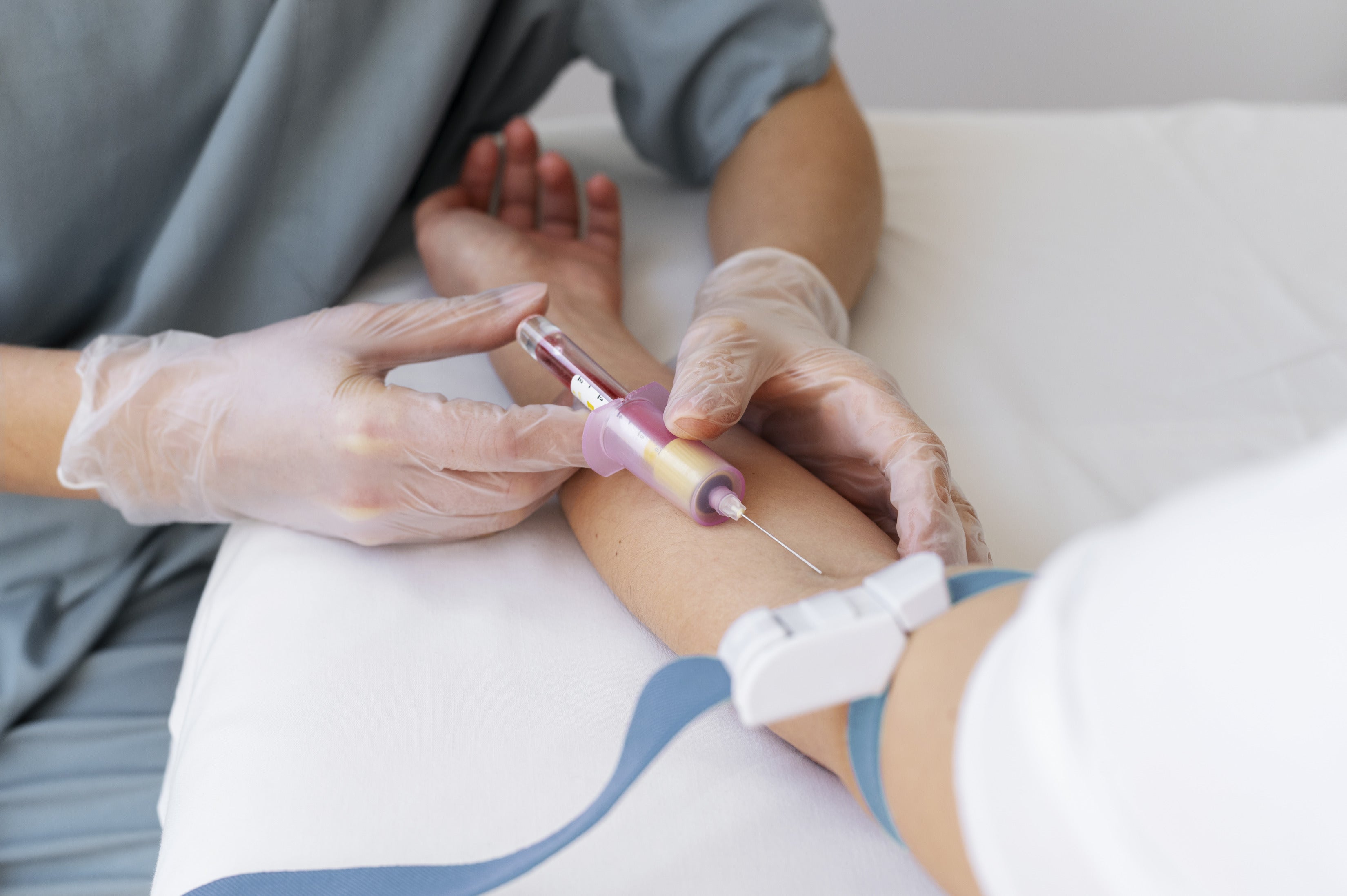MCHC Blood Test Results: Meaning of Low and High Levels


The MCHC test is one of the red cell indices that are part of the complete blood count (CBC) and, in combination with other tests, provides a presumptive diagnosis of anaemia. The MCHC relates to the size of the cells and is measured in g/ dL or g/ L. The customarily expected values are 340 ± 20 g/L or 34 ± 2 g/dL. The higher and lower values indicate different types of anaemia and other health conditions, and the doctors recommend further tests for definitive diagnosis.

For more information and in-depth understanding, visit our informative Red Blood Cell and Haemoglobin pages.
The MCHC test measures the concentration of haemoglobin (Hb) in a given volume of packed red corpuscles (RBCs). As Hb is the primary oxygen-carrying protein, the MCHC test is, in fact, a measure of the oxygen-carrying capacity of the blood. The test is performed routinely as a part of a complete blood count (CBC) and is used for routine health screening, diagnosis of illnesses, monitoring and follow-up of treatment regimes, etc.
The healthcare providers recommend the MCHC test for the following conditions:

For the test, the pathologist or the laboratory staff draws a small amount of blood into the test tubes. The process is performed at clinics or hospitals, and no activity or dietary restrictions are necessary. The skin puncturing causes a slight pain. The rest of the procedure is without any complications.
In modern labs, automated haematology analyzers are available to measure all haematological parameters, including hematocrit and haemoglobin concentration. The MCHC is calculated by dividing haemoglobin concentration with the hematocrit and multiplying with 100 to get results in percentages.
People taking blood thinners or having bleeding disorders experience prolonged bleeding. Sometimes, a large bruise or haematoma develops at the collection site that causes discomfort, but it is rare. Another potential complication is the risk of infection at the puncture site.
Welzo offers a Full Blood Count (FBC) Test Kit to determine different blood parameters thoroughly. The results are highly accurate and quick. Visit the page to order the kit.
The results can either be within the reference range or higher or lower. The results within the reference range of 340 ± 20 g/L or 34 ± 2 g/dL means everything is fine, and the blood has adequate concentration of haemoglobin.
The low value of MCHC or hypochromia means the concentration of haemoglobin and, thus, the oxygen-carrying capacity of the blood is less than the optimal value. The major causes responsible for low MCHC values are;

Higher values or hyperchromia means haemoglobin concentration in the red cells is higher than usual. Several causes responsible for higher MCHC values are;
The lower or higher values don't necessarily mean anaemia, as there are several types of normochromic anaemia in which the MCHC values are normal. These include many types of haemolytic anaemia, bone marrow failures, mixed anaemias, anaemia due to renal diseases and blood loss anaemia.
To boost the MCHC values, taking a dietary supplement containing iron is critical. The other option is to diversify the meals by including beans, leafy greens, lentils, and lean meats. The treatment of underlying chronic diseases and inflammations is necessary. In acute and life-threatening conditions, blood transfusion is necessary.
Yes, dehydration causes an apparent increase in the MCHC value. This is due to the reduction in blood plasma volume and the redistribution of water and fluids into the tissues and cells that need it the most.
For the treatment of MCHC, medications, dietary supplements, dietary changes, and procedures, e.g., blood transfusion and hydration (fluid therapy), are used. The untreated and chronic cases of lower MCHC result in severe complications like hypoxia anaemia, paleness, heart palpitations and worsening of underlying health conditions.
Several medications that cause increased MCHC due to disturbance of fluid dynamics of the blood are penicillins, nitrofurantoin, non-steroidal anti-inflammatory drugs (NSAIDs), methyldopa, levofloxacin, Levodopa and cephalosporin antibiotics. The responses vary from person to person, and discussing the matter with the healthcare provider is critical.
The symptoms depend upon the cause of higher MCHC. For example, if the cause is liver disease, the symptoms are yellowish skin, fatigue, poor appetite, and pain in the upper part of the abdomen. If it is due to dehydration, the symptoms are thirst, dry skin, dry mouth, decreased urine output, dark-coloured urine and dizziness.
Lower MCHC or hypochromia is often a sign of thalassemia and different types of anaemia. The symptoms depend upon the underlying causes. The general symptoms are fatigue, weakness, paleness of skin and mucous membranes, shortness of breath, dizziness, lightheadedness, irregular and rapid heartbeat, cold feet, hands and extremities, poor cognitive functions and hair loss.
The mean corpuscular haemoglobin (MCH) test measures each red blood cell's average amount of haemoglobin. It is calculated by dividing the total amount of haemoglobin in the blood by the number of red blood cells. It is measured in picograms (pg) of haemoglobin per red blood cell, and the average value is 29 ± 2 picograms (pg) per cell.
The MCHC, on the other hand, measures the haemoglobin concentration in a specific volume of the packed red blood cells (RBCs) and is measured in g/ L or g/ dL.

The mean corpuscular haemoglobin concentration (MCHC) is a quantitative measure of the haemoglobin concentration in the blood's red cells. It is included in the complete blood count (CBC) test alongside the other tests, e.g., RBC count, WBC count, haemoglobin concentration, platelet count, differential white cell count, etc.
The reference range is 340 ± 20 g/L or 34 ± 2 g/dL, and higher or lower values indicate some types of anaemia, thalassemia and other health conditions. The doctors, however, view the results in light of other tests in the CBC for a better understanding of the causes of anaemia and the causes and prognosis of higher or lower MCHC values in the absence of anaemia. There is always a risk of error in the results, and the proper explanation demands caution and understanding of its limitations and potential errors in the test. The findings must be considered only if other tests support them and are repeatable.

Our article, ‘Blood Tests: Definition, Importance, Uses, and Types,’ provides a detailed overview of the blood work. Visit the page to read it and understand the dynamics of blood. Visit Welzo to buy blood test kits and supplements to restore the blood parameters to the standard values.
Plus get the inside scoop on our latest content and updates in our monthly newsletter.